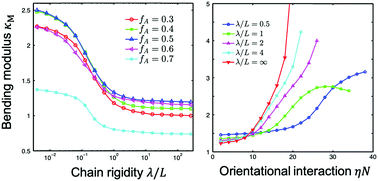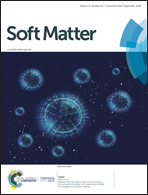Elastic properties of liquid-crystalline bilayers self-assembled from semiflexible–flexible diblock copolymers
Abstract
The mechanical response and shape of self-assembled bilayer membranes depend crucially on their elastic properties. Most of the studies focused on the elastic properties of fluid membranes, despite the ubiquitous presence of membranes with liquid-crystalline order. Here the elastic properties of liquid-crystalline bilayers self-assembled from diblock copolymers composed of a semiflexible block are studied theoretically. Specifically, the self-consistent field theory (SCFT) is applied to a model system composed of semiflexible–flexible diblock copolymers dissolved in flexible homopolymers that act as solvents. The free energy of self-assembled tensionless bilayer membranes in three different geometries, i.e. planar, cylindrical and spherical, is obtained by solving the SCFT equations using a hybrid method, in which the orientation-dependent functions are treated using the spherical harmonics, whereas the position-dependent operators are treated using the compact difference schemes. The bending modulus κM and Gaussian modulus κG of the bilayer are extracted from the free energies. The effects of the molecular parameters of the system, such as the chain rigidity and the orientational interaction, are systematically examined.



 Please wait while we load your content...
Please wait while we load your content...